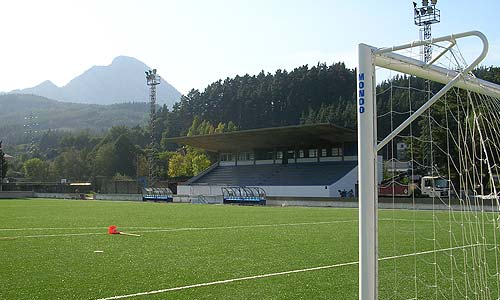A little further up the valley from Gernika is the town of Durango, which despite having a population of just 29,000, is the second largest town in Vizcaya, after those that make up the Bilbao conurbation. Steeped in Basque tradition, it was Durango and not Gernika that suffered first at the hands of Franco’s hired assassins, the Luftwaffe, when the town was bombed on 31 March 1937. It was one of those Basque traditions, the Ezkurdioste games, which was responsible for the birth of the town’s senior football club, Sociedad Cultural Deportiva Durango. The 1919 games included a football tournament, and a group of friends joined forces to form Cultural.

Cultural’s first permanent home was called Ertzimingogane and opened in 1921 in the nearby village of Iurreta. In 1925, the club moved back to Durango and the Campo San Fausto. It was here that Cultural achieved a modicum of success, winning the Campeón Absoluto de la Serie “B” and attracting scouts from the region’s bigger clubs and beyond. In 1943-44, Cultural won the Primera Regional and advanced to the Tercera for the first time. The start of the 44-45 season could not have gone much better, with Cultural winning three and drawing one of the first four fixtures. However, that was as good as it got, as a player exodus in October saw the club lose 13 of the remaining 14 fixtures, leading to relegation. Cultural returned to the Tercera a season later, but was relegated at the end of the 1947/48 season in controversial circumstances, when the Federation decided that provincial capitals should be represented in the third tier. So Cultural made way for Numancia and Alaves. On 15 September 1949, the club inaugurated their current home, the Campo de Tabira, which was to the south of the town and featured one of the region’s first cantilevered covered stands. This raised stand was only 30 metres in length and would serve the club and its supporters for the next 57 years.

A return to the Tercera in season 1955-56 saw the club finish second, but perform poorly in the play-offs finishing seventh out of eight. Cultural never quiet scaled those heights again and dropped in to the regional leagues in 1962, where they remained for 20 years. The mid-eighties saw a return to the Tercera and two league titles. Eventually, in 1987, Cultural won automatic promotion to Segunda B. They managed four seasons in the third tier, finishing sixth in 89-90, but dropped back to the Tercera in 1991. The majority of the past three decades have been spent in the Tercera, although the club did make fleeting returns to Segunda B in 95-96, 05-06 & 18-19. Following relegation in 2006, the now municipally owned stadium under went a major rebuild. The historic, but ageing main stand was replaced with a bright, full length cantilevered Tribuna and an artificial playing surface was installed.

The Campo de Tabira follows the recent trend of new developments that have just the one raised main stand, which also incorporate all of the club’s facilities. Tabira’s main tribuna is an impressive structure and features 5 rows of multi-coloured seats along the full length of the west side. This seating deck is raised 8 feet above pitch level to allow changing and other facilities to occupy the void under the stand. The lines of the stand are somewhat ruined by two sets of access stairs at the front, but this is redeemed by the thin and slightly curved cantilevered roof. At each end of the stand are two raised pods, which add to the curiosity, but I am not convinced about their actual functionality. The opposite east side features the only remaining relic of the old stadium, a thin, open terrace. Single-stand stadiums have their detractors, but when they are delivered with style and panache, like the Campo de Tabira, they deserve credit and recognition.

Always interested in football clubs in Espana, many thanks for this article. Gracias. From a Liverpool supporter,David McCormick.
LikeLike